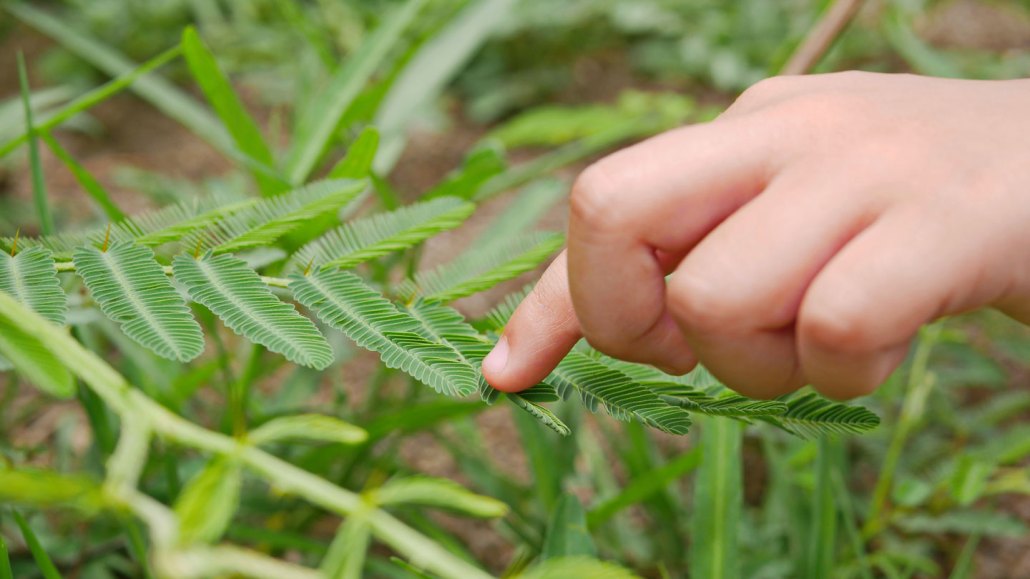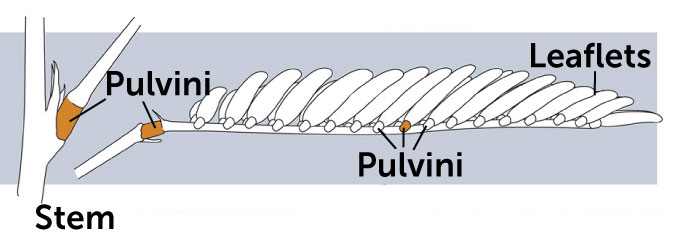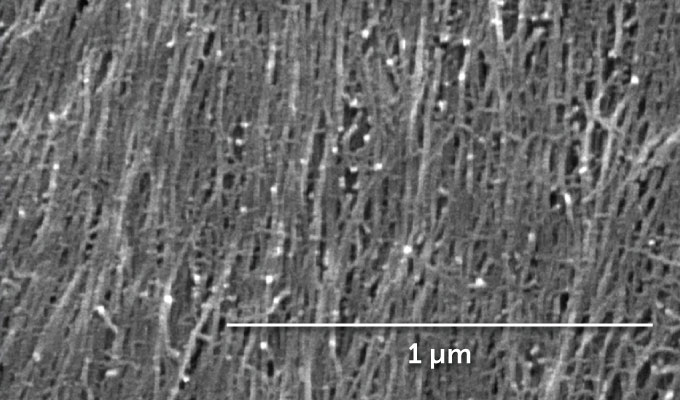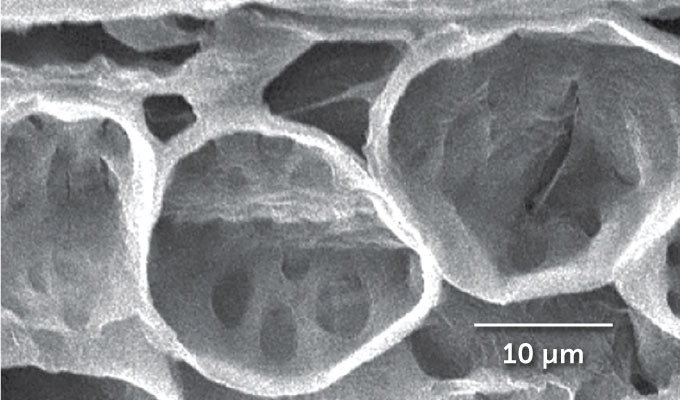
A plant’s version of muscles does the lifting and pushing that shuts a Mimosa pudica plant leaf like a book when touched, perhaps as defense against danger. Now scientists are looking at how structural details of the musclelike cells enhance the plant's folding abilities.
Ole_CNX/istock/getty images plus
By Susan Milius
- More than 2 years ago
Read another version of this article at Science News Explores
Call them plant motors. Or plant muscles. Tiny bulges of specialized cells in a mimosa plant can fold its feathery leaflets together in seconds, then relax — and do it again.
A new look at these bulges on the Mimosa pudica plant has revealed more details of how a leaf manages its unusually fast folding, says biomechanist David Sleboda of the University of California, Irvine. “I think that these particular organs are really cool because their motion is reversible,” he says. “[W]hen people see plant motion that is reversible, it feels much more similar to animal motion.”
Scientists have already worked out the basic chemistry that drives a little mimosa motor, or pulvinus, he and colleagues write in a paper slated for the Feb. 6 Current Biology. When a deer hoof or something else scary jostles a leaf, potassium and some other ions shift from one part of a pulvinus toward another. Water follows the swoosh of ions. Cells that lose water deflate and sag while those on the other side bloat. Distortions in multiple pulvini make the halves of a feathery leaf fold toward each other, like an invisible hand gently closing a book.

Instead of studying chemistry, Sleboda and colleagues looked at microscopic structural details in pulvinus cells that help create such useful distortions, he reported January 7 at the annual meeting of the Society for Integrative and Comparative Biology in Austin, Texas. One feature that makes plant-muscle cells bloat more efficiently is reinforcement with microscopic fibrils. They work like corsets, keeping cells from bulging out in all directions. Instead, the corset directs much of the swelling along the axis that will fold up the leaf halves.
Also, pulvinus cells that need to bulge fast have what look like wrinkles of easily expandable tissue for inrushing water, plus special highly porous zones called pit fields. The pits look as if water could sluice through easily in a tickled-leaf emergency. Cell arrangement itself looks specialized for expanding and shrinking. A pulvinus cross section reveals a pattern “like the bellows of a concertina,” Sleboda said.


The widespread M. pudica, or sensitive plant, is one of the better-known leaf flexors. Yet clusters of other plants in the same family, the legumes, also move their leaves, says botanist Thainara Policarpo Mendes of Universidade Estadual Paulista in Botucatu, Brazil. Some relatives close fast like M. pudica, but many are slower. What she also thinks about, though, is why leaves close at all. People have proposed a variety of advantages: discouraging animals from grazing on a plant that suddenly looks more sticklike, or even helping a plant lose less heat on very cold nights.
Sleboda too can reel off proposed hypotheses but remains skeptical of all of them. “There’s not a ton of research,” he says. That, however, is fine with him. “My favorite thing about sensitive plants’ leaf closing,” he says, “is that we don’t know why they do it.”






